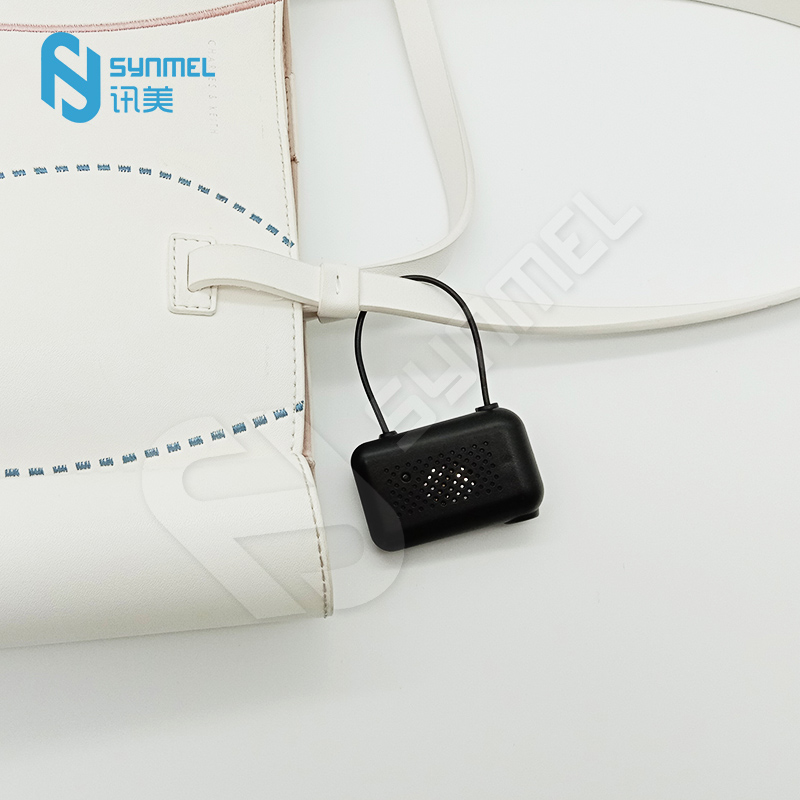- English
- Español
- Português
- русский
- Français
- 日本語
- Deutsch
- tiếng Việt
- Italiano
- Nederlands
- ภาษาไทย
- Polski
- 한국어
- Svenska
- magyar
- Malay
- বাংলা ভাষার
- Dansk
- Suomi
- हिन्दी
- Pilipino
- Türkçe
- Gaeilge
- العربية
- Indonesia
- Norsk
- تمل
- český
- ελληνικά
- український
- Javanese
- فارسی
- தமிழ்
- తెలుగు
- नेपाली
- Burmese
- български
- ລາວ
- Latine
- Қазақша
- Euskal
- Azərbaycan
- Slovenský jazyk
- Македонски
- Lietuvos
- Eesti Keel
- Română
- Slovenski
- मराठी
- Srpski језик
What is the working principle of EAS Self Alarming Tag
2025-01-14
EAS automatic alarm tag is a technology commonly used in the retail industry to prevent theft. It helps merchants prevent theft of goods through the cooperation of electronic tags, sensors and alarm systems. The working principle of the EAS system is mainly based on electromagnetic or inductive technology. The specific working method is as follows:
1. EAS tag type
EAS tags are generally divided into the following types:
Radio frequency tag (RF): Works using radio frequency identification technology, and the common working frequency is 8.2 MHz.
Ultra-high frequency tag (UHF): Uses ultra-high frequency RFID technology and can be identified at a long distance.
Magnetic stripe tag (AM): Based on magnetic technology, the working frequency is 58 kHz.
Magnetic tag (EM): Based on the principle of electromagnetic induction, the frequency is usually 75 kHz.
2. Working principle
The EAS system cooperates with tags and sensors, and mainly prevents theft of goods through the following steps:
Tag installation: An EAS tag is installed on each item. The tag usually contains a small electronic component, such as a radio frequency component, a magnetic component or other induction device. Tags are hidden inside or attached to goods and are not removed or disabled before the goods are sold.
Sensors in the monitoring area: Sensor devices are installed at the door or exit. These sensors are usually installed on the ground or door frame. They are used to detect the signals sent by EAS tags. The sensor determines whether the tag is activated during the passage by monitoring changes in frequency, magnetic field, etc.
Activation and identification of tags:
Radio frequency tag (RF): When a product containing an RF tag passes through the sensor area, the tag interacts with the signal sent by the sensor to generate a specific electromagnetic wave frequency. If the tag is not properly unlocked or disabled, the sensor will detect this change and trigger an alarm.
Magnetic stripe tag (AM): When the product passes through the detection area, the sensor monitors the changes in the magnetic elements in the tag. If the tag is not removed or released, the abnormality of the magnetic field will trigger an alarm.
Electromagnetic tag (EM): Similar to RF tags, it determines whether there is an unlocked tag by monitoring the changes in the electromagnetic signal of the tag in the product.
Alarm triggering: If the product is not "unlocked" or disabled normally, the sensor will detect an abnormality when the tag enters the monitoring area and trigger the alarm device. Usually, an alarm sound or light will attract the attention of the store clerk, indicating that an item is trying to leave the store without payment.
3. Disabling and releasing the tag
Disabling at checkout: When the customer is checking out, the cashier will use special equipment to remove the tag or disable the tag to prevent it from triggering the alarm system.
Specially designed tags: Some tags are designed to be non-removable, usually for high-value items. Even if these tags are not disabled, they can still provide protection through the alarm system.
4. Features of the EAS system
Real-time monitoring: The EAS system can monitor the status of the goods in real time and detect stolen goods in time.
Wide coverage: It is suitable for large-area stores and supermarkets and can effectively cover multiple entrances and exits.
Efficiency: As long as the tag is properly handled when the goods are sold, the system can automatically identify it, reducing manual intervention.
Therefore, the EAS automatic alarm tag uses electromagnetic, radio frequency or magnetic technology to monitor whether the goods are illegally taken out of the store through the cooperation of the electronic components in the tag and the sensor. When unauthorized goods leave, an alarm signal is triggered, thereby effectively preventing theft.




